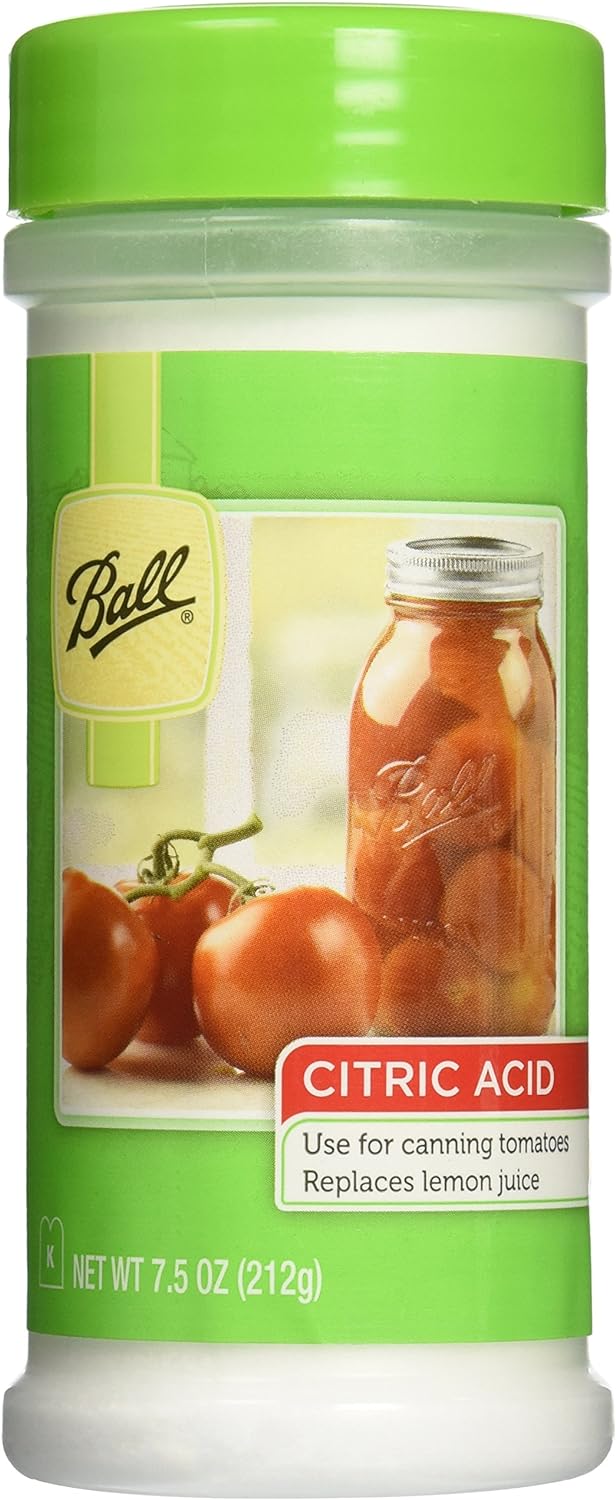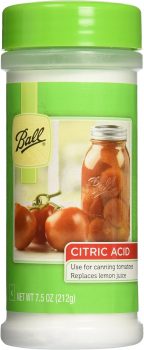
Canning enthusiasts and home chefs alike are always on the lookout for reliable methods to enhance their food preservation efforts. The Ball Jar Citric Acid, a 7.5-ounce product, stands out in this arena. In this article, we’ll dive deep into its features, benefits, and how it can transform your canning experience, specifically with tomatoes.
Product Features
| Feature | Description |
|---|---|
| Brand | Ball |
| Customer Review Count | 1189 |
| Customer Rating | 4.7 |
| Usage | Add to jar to safely can tomatoes |
| Alternative to Lemon Juice | Provides pantry-ready alternative |
| Flavor Impact | Does not change tomato flavor like lemon juice |
| Recipe Compliance | Required for 90% of USDA tomato recipes |
| Taste Enhancement | Citric acid just made it taste better |
| Safety | Easier and safer canning process |
Product Overview
| Pros |
|---|
| Enhances flavor without altering it |
| Supports safe canning of tomatoes |
| Convenient pantry alternative to lemon juice |
| Used in most USDA tomato recipes |
| Positive customer feedback |
| Cons |
|---|
| May not be available in all local stores |
| Some users prefer fresh alternatives |
Understanding the Importance of Citric Acid in Home Canning
Incorporating Ball Jar Citric Acid into your canning routine is straightforward, and it can significantly enhance the safety and flavor of your preserved goods. To get started, I recommend measuring out the right amount of citric acid per jar. For quart jars, I typically use about one teaspoon, while pint jars require just half a teaspoon. This precise measurement ensures optimal acidity, which is crucial for preserving tomatoes safely.
When you’re ready to add the citric acid, simply pour it directly into the clean, dry jar before adding your tomatoes. This method allows the citric acid to evenly distribute throughout the contents as you fill the jar, promoting an even pH level. After adding your tomatoes, make sure to leave the appropriate headspace recommended by your canning recipe—usually about an inch.
Remember to follow best practices by ensuring jars and lids are properly sterilized, which enhances the safety and longevity of your canned goods. As you’re sealing the jars, a quick wipe of the rims is essential to remove any residue; this ensures a complete seal. Once your jars are filled and sealed, process them in a water bath canner according to the guidelines.
By following these tips, you’ll feel confident using Ball Jar Citric Acid, and you can enjoy the convenience and security it brings to your home canning experience.
How to Use Ball Jar Citric Acid Effectively
When using Ball Jar Citric Acid in your canning routine, a few practical steps can make a significant difference. First, it’s essential to measure the correct amount. Typically, you’ll want to add 1 teaspoon of citric acid per quart of tomatoes. If you’re canning pint jars, use ½ teaspoon. This precision ensures that the acidity level remains ideal for safe preservation.
As I prepare my jars, I find it helpful to combine the citric acid with a little water first, forming a slurry. This method allows for even distribution when pouring it into the jar, preventing clumping. After that, fill your jars with your prepared tomatoes, leaving the appropriate headspace specified in your recipe.
Next, ensure that you wipe the rim of each jar to eliminate any residue, including citric acid particles, which might prevent the lid from sealing properly. It’s a small step but crucial for a successful seal.
When it comes to canning tomatoes, it’s vital to follow the recommended processing times in a pressure canner or water bath, based on your altitude. This is where Ball Jar Citric Acid shines, as it helps maintain the right pH levels, reducing the risk of botulism.
By incorporating these practices, I feel confident that I am maximizing both the safety and flavor of my canned tomatoes, so my family can enjoy them throughout the year.
Conclusions
In conclusion, Ball Jar Citric Acid is an invaluable tool for safe and effective canning, especially for tomatoes. Its ability to preserve flavor while enhancing the taste is unmatched. Whether you’re a beginner or an experienced canner, incorporating citric acid can lead to better, safer results. Make the switch and elevate your canning game today.








